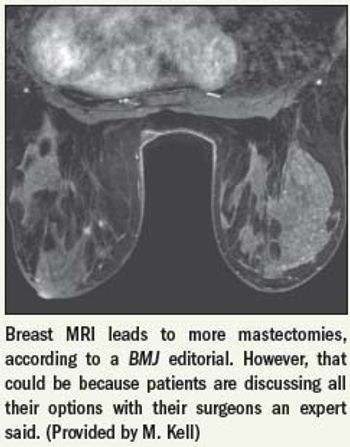
An editorial published in BMJ has stirred up debate once again about whether breast MRI leads to more mastectomies. The author said yes it does while others insist it does not.

An editorial published in BMJ has stirred up debate once again about whether breast MRI leads to more mastectomies. The author said yes it does while others insist it does not.

Transvaginal ultrasound demonstrates good sensitivity and specificity for detecting endometrial cancer, a study from the University College, London. finds. But that doesn’t mean it’s suited for use in the general population just yet. The researchers found transvaginal ultrasound is better for high-risk groups prone to endometrial cancer, and especially in the management of postmenopausal women undergoing pelvic scans for reasons other than vaginal bleeding.
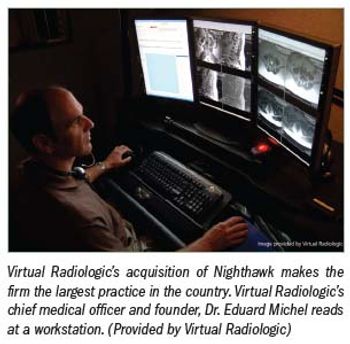
The Virtual Radiologic and NightHawk merger has some experts worrying about jobs, referral issues, a delays in care.
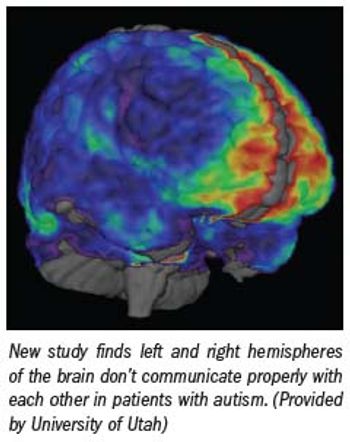
A new study using functional MRI shows the right and left hemispheres of the brain don’t communicate well in patients with an autistic condition.
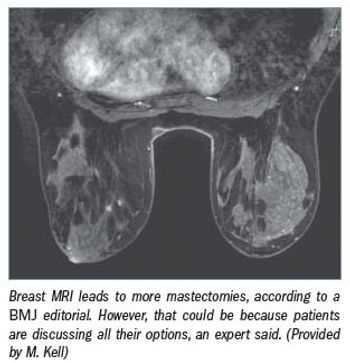
An editorial published in BMJ has stirred up debate once again about whether breast MRI leads to more mastectomies. The author said yes it does while others insist it does not.

Despite the increasing popularity of blood testing for colorectal cancer, radiologists don’t have to worry CT colonography will be replaced just yet, according to experts.

Minnesota is in the vanguard as far as implementing clinical decision support, a tool that tamps down overutilization and reduces the incidence of patients receiving inappropriate diagnostic imaging tests. Minnesota is launching a statewide initiative to adopt the tool; others states are also considering its use.

A study presented Wednesday at the RSNA meeting adds further evidence to the recommendation women with newly diagnosed invasive lobular carcinoma should have their contralateral breast screened with MRI. Most women aren’t routinely screened in the contralateral breast because whether to do so is highly dependent on the surgeon’s preference. This research, however, provides more evidence why they should: MRI detected synchronous breast cancers in 16% of patients.

Study reveals breast pain can be only indicator of breast cancer. Findings challenge reluctance to image for breast pain alone.

Patients’ risk of developing cancer from CT scans is not as high as previously thought, but the rate still doubled over the time period studied, according to a study presented Wednesday at the RSNA meeting.

A new approach that detects breast cancer vasculature is making an appearance at the 2010 RSNA meeting. The method, called high spectral and spatial resolution, or HiSS, uses water to detect tumor blood vessels without contrast.

Using 80-kVp CT pulmonary angiography for patients suspected of CT pulmonary embolism reduces radiation exposure, significantly increases contrast medium attenuation in the pulmonary arteries, and doesn’t look much different from standard dose, according to a study presented Tuesday at the RSNA meeting.

The iPhone has excellent image quality and allows for accurate interpretation of telestroke cases, according to a study presented Monday at the RSNA 2010 meeting. The major pitfalls of using the mobile device have to do with time: the download speed is slow and so is the time it takes to interpret the image.

The higher rate of mastectomy among breast cancer patients imaged with MRI may be due to selection bias as opposed to the modality itself, according to a study presented at the RSNA scientific assembly Nov. 28.

Screening MRI should be an adjunct to screening mammography in women with a personal history of breast cancer, researchers at the 2010 RSNA scientific assembly in Chicago said.

CT protocols for ischemic stroke can be expanded to cover the heart as well as the head and neck, obviating other imaging tests that may be necessary to pinpoint the source of the stroke, a new study finds.

Combining digital breast tomosynthesis and a laser-based technique called diffuse optical tomography, radiologists may be better able to distinguish malignant from benign lesions in the breast, according to a new study.

Taste matters when it comes to oral contrast agents, and may affect patient compliance, according to a new study. Patients preferred diluted oral contrast agent iohexol (GE Healthcare’s Omnipaque) to diluted diatrizoate sodium (Mallinckrodt’s Gastroview) when undergoing abdominopelvic CT scanning.
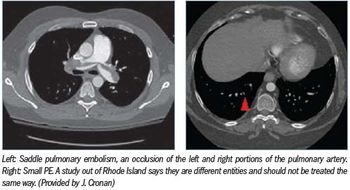
Nearly two years after a paper titled “Dots are not clots: the over-diagnosis and over-treatment of pulmonary embolism” was presented at the RSNA meeting, radiologists are still debating when to put patients on anticoagulation therapy.

Interventional radiologists have long suspected ionizing radiation has detrimental effects on them, including cataracts, radiodermatitis, and hand depilation.

Not only is it possible to detect aneuploidy and structural fetal anomalies with sonography during the first trimester, but doing so allows for better treatment options, according to a study published in the Journal of Ultrasound in Medicine.
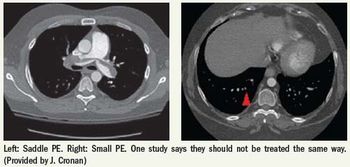
Nearly two years after a paper titled “Dots are not clots: the over-diagnosis and over-treatment of pulmonary embolism” was presented at the RSNA meeting, radiologists are still debating when to put patients on anticoagulation therapy.

Two new DNA-based tests could noninvasively detect colon cancer, but it is unlikely they will replace CT colonography, according to experts. If anything, the tests could replace the fecal occult blood test currently in use.

California radiologists will be required to incorporate radiation dose levels in their reports under a measure signed into law Sept. 30 by Governor Arnold Schwarzenegger.

Interventional radiologists have long suspected ionizing radiation has detrimental effects on them, including cataracts, radiodermatitis, and hand depilation.

Now there’s proof after a day of interpreting images radiologists are less accurate, more tired, unable to focus, and experience eyestrain compared with earlier in the day.

Debate continues in the medical community about how many exams it takes before a physician is proficient in identifying ectopic pregnancy with ultrasound. The American Institute of Ultrasound in Medicine recommends at least 300 sonographic examinations for obstetric indications. The American College of Emergency Physicians recommends a minimum of 25 exams in each emergency bedside sonography indication. A new study finds 25 exams are not enough, but 300 are probably too many.

A new study on vertebroplasty adds weight to the argument the procedure is safe and effective for patients with acute osteoporotic vertebral compression fractures.
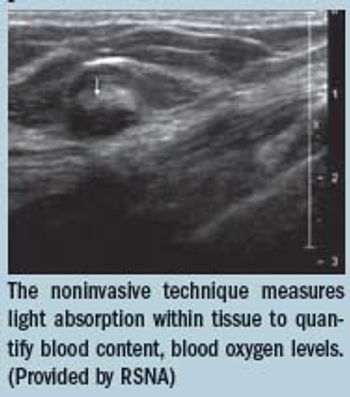
An ultrasound-guided diffuse optical technique may lower the rate at which women undergo breast biopsies for suspicious lesions, according to a study published in Radiology.

Breast screening habits for transsexual women shouldn’t differ from those of biological women, according to a recent European study.

Published: October 9th 2008 | Updated:

Published: October 30th 2008 | Updated:

Published: January 1st 2009 | Updated:

Published: March 23rd 2009 | Updated:

Published: March 24th 2009 | Updated:

Published: May 13th 2009 | Updated: